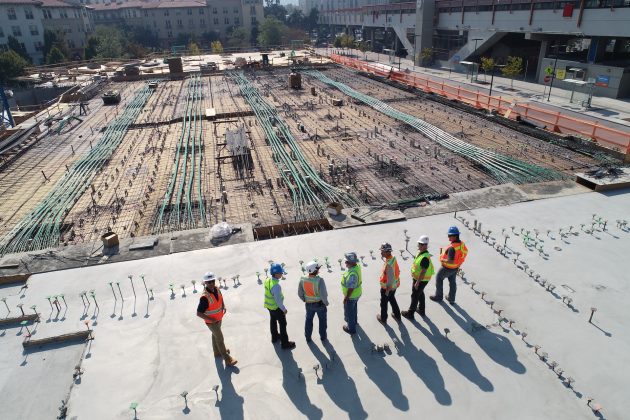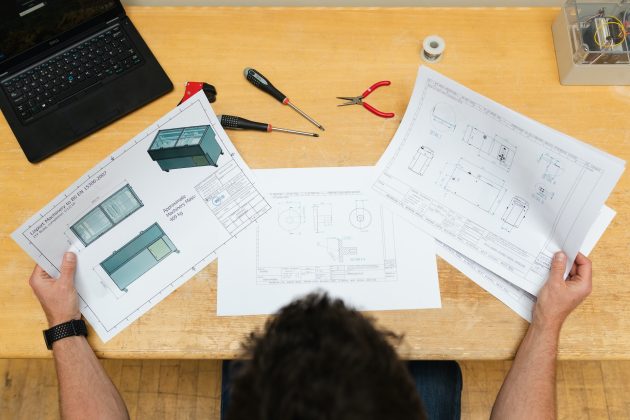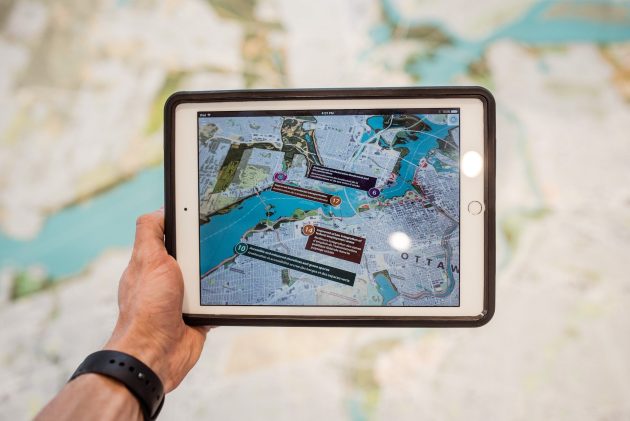Construction is a notoriously complex industry, and as such, numerous technologies have been developed to make things easier and more streamlined. While many have come and gone, one technology has managed to cement its place as an indispensable tool. Proptech has shown its ability time and time again to help people from all walks of the real estate industry to optimize all aspects of property management. This post will explore what this tool is and how those in the construction industry use it to enhance the way they do things.

What Is Proptech?
Proptech (a portmanteau of property technology) is the integration of technology and innovative solutions into real estate industries. This emerging field is disrupting and revolutionizing the construction industry in never thought possible ways. Proptech encompasses a wide range of technologies, from 3D printing to virtual reality to big data analytics, that all work together to optimize and streamline workflows for more efficient building processes. As stated by proptech expert Kurt Uhlir who advises people from business owners to realtors to accelerate their growth, property technology has the ability to revolutionize the world of real estate. Through this technology, construction companies can reduce costs, minimize waste and errors, speed up decision-making processes, improve transparency and communication between stakeholders, and enhance the overall quality of buildings. Intelligent building technologies also allow for real-time monitoring and management of energy usage, which can lead to significant savings in the long term.
Impact On The Building Process
As you might imagine, with such a broad remit, property technology looks to transform the construction industry in ways you might never have imagined. One of the critical ways that proptech is transforming the building process is through enhanced collaboration and communication. With advanced project management tools, developers, architects, engineers, contractors, and other stakeholders in a construction project can work together seamlessly, leading to better coordination and fewer delays or mistakes. Another benefit is the all-encompassing cost efficiency. With the use of building information modeling software (more on that in a bit), for example, designers can produce more accurate plans with fewer errors at a lower cost than traditional methods used in construction plans. Better yet, once these plans are set up using BIM software and augmented reality features that allow stakeholders to see 3D renderings in real-life settings before development begins, it helps resolve design conflicts before they become expensive problems during the construction phase.
Some Ways In Which Technology Is Being Used To Help The Industry
As you can see, poetry technology isn’t merely the future; it’s already here and has become integrated into almost every facet of the sector. But while this all sounds wonderful, what are some practical applications for the various technologies that make up proptech?
Use Of Drones For Site Inspections And Surveying
One of the most fascinating uses of proptech in the construction industry is the use of drones for site inspections and surveys. Drones are crewless aerial vehicles (UAVs) that can be controlled remotely, and with recent advancements in technology, they have become incredibly useful for surveying and inspecting various sites worldwide. A drone can fly over a site and capture high-definition images and videos from different angles and heights. This not only saves time but also reduces costs as it eliminates the need for traditional methods like using ladders or cranes to access certain locations. Moreover, drones can efficiently collect data on site conditions such as topography, vegetation coverage, water bodies, and soil types, which can significantly assist architects, engineers, contractors, and project managers in making informed decisions. Drones also provide a higher level of safety by removing potential dangers that human inspectors would typically have had to have ventured into. Furthermore, drones can be utilized for monitoring job progress more effectively since they allow real-time feedback during construction projects.
Virtual And Augmented Reality For Visualization And Planning
With VR and AR, project teams can collaborate more effectively, identify potential problems rarely, and ensure that everyone involved in the construction process has a shared understanding of what the final product will look like. It also lets clients visualize their projects better and make informed decisions about potential changes or additions. For example, using AR headsets during building inspections can allow inspectors to easily see hidden details such as plumbing, electrical wiring, or structural issues. This technology can also be used as a safety training tool for new employees on construction sites without endangering anyone’s life! With continued developments in VR/AR technology, it’s exciting to imagine how it will continue to shape the construction industry’s future.
Software For Project Management And Collaboration
One of the key ways that proptech is revolutionizing the construction industry is through software for project management and collaboration. In the past, project managers had to rely on spreadsheets and paper-based processes to track progress and communicate with team members. This could lead to miscommunications, errors, and delays. With software tools designed specifically for construction projects, project managers can keep all stakeholders up-to-date in real time. These tools allow teams to collaborate more effectively by sharing online documents, plans, schedules, and progress reports. Many software packages also offer mobile access so that team members at different job sites or locations can communicate and coordinate effortlessly. With these digital tools in place, projects run smoother and finish faster than before. As a result of using proptech-enabled project management software solutions in construction projects, we are witnessing a reduction in cost overruns due to better planning and increased overall efficiency throughout the development process. Furthermore, having all data in one place has led to improved resource allocation and enhanced decision-making strategies for stakeholders involved in any construction project.
Building Information Modeling (BIM) For More Accurate And Efficient Construction
Building information modeling (BIM) is a digital technology that is changing the construction industry for the better. BIM software allows architects, engineers, and contractors to create detailed three-dimensional models of building components and systems before any actual work begins. The technology gives professionals a better understanding of the demoing prior to implementation, allowing them to detect potential issues at the design stage rather than during construction which could prove incredibly costly. The result is more efficient workflows, greater accuracy in planning resources, and better project outcomes, all complete with significantly lower costs over time as well. With BIM’s interactive visualization capabilities, stakeholders can easily see what they are investing in when examining building plans. This means owners can provide feedback on their expectations for a given project and immerse themselves in the space while it is being built. This opens up new possibilities for collaboration because everyone can clearly understand every aspect of the build, from concrete footings to roof shingles, ultimately leading to higher quality construction standards. This translates into more satisfied customers who come back to do business again in the future or recommend you further, thus positioning your proptech-based building company as a preferred vendor within the industry.

3D Printing For Faster And More Cost-Effective Construction
The civil engineering sector is increasingly adopting 3D printing tech as a more efficient, cost-effective way of building. With 3D printing, structures can be created from scratch quickly, using fewer workers and materials. This technology has opened up new possibilities for architects and builders who want to create larger, more complex structures that would have been deemed too time-consuming or even impossible in the past. A major benefit of 3D printing is the reduction in material waste, as only the exact amount of materials are used. The process also enables builders to use recycled resources in their projects, further reducing costs and promoting sustainability. Additionally, 3D-printed companies are often lighter and more easily transported than traditional materials such as concrete and steel.
Cloud-Based Storage And Sharing Of Project Data
This option focuses not on a specific application or technology but on how cloud computing has improved productivity across the industry as a whole. Cloud-based storage and project data sharing are among the most significant ways proptech has made an impact. It enables construction companies and realtors to store all their project-related data in one place securely, accessible from anywhere and at any time. Gone are the days when project files were stored in filing cabinets or physical hard drives. With cloud-based storage, architects, engineers, contractors, and other team members can collaborate on projects in real time, reducing communication errors and increasing efficiency.
Additionally, cloud-based storage ensures that all parties involved have access to the latest version of documents, such as blueprints, designs, schedules, and budgets. This promotes better decision-making as it reduces misunderstandings that arise when team members work with outdated information. Moreover, many of the larger cloud service providers allow for easy integration with other porptech tools such as those mentioned previously. In general, cloud-based storage and sharing of project data in construction through proptech offer tremendous benefits, such as real-time collaboration between stakeholders leading to better decision-making capabilities and increased productivity.
AI And ML For Predictive Analytics And Decision-Making
AI (artificial intelligence) and ML (machine learning) are firmly embedding themselves in the milieu of business and have spread to pretty much every industry. These two technologies provide predictive analysis and accurate decision-making processes, all of which are vital regarding construction. With AI and ML, companies can gain insight into future demand, optimize resources, reduce waste, and improve the overall efficiency of operations and the productivity of employees. By using predictive analytics based on historical data and market trends, AI tools can help managers make more accurate judgments about the path their projects should take. Machine learning algorithms can also analyze data from various sources in real time to identify potential problems before they occur. One example of the use of AI in proptech is in the design phase of a project. Companies can now use machine learning algos to predict and prevent costly changes and suggest improvements that will boost the final result of a build. AI and ML have become critical tools for achieving efficiencies in construction projects through predictive analytics that enable informed decision-making. By leveraging these technologies, companies will continue to drive improvements across all aspects of construction management, from design to completion.
Blockchain Platforms For Supply Chain Management
Blockchain platforms are becoming increasingly popular supply chain management tools in this sector. With a distributed public ledger, blockchain can help to enhance transparency and accountability throughout the supply chain cycle. Traditionally, supply chains in construction have been plagued with issues related to delays, cost overruns, and lack of transparency. By using blockchain, all parties involved in the supply chain can access real-time data at every stage of the process, from sourcing raw materials to final delivery. Blockchain also helps reduce fraud by ensuring tamper-proof record keeping that can’t be altered without a trace. This feature is particularly helpful in preventing disputes and strengthening relationships between contractors and suppliers. Additionally, blockchain technology can streamline payment processes by facilitating secure and fast transactions through smart contracts that automatically execute contracts once certain conditions are met. Adopting blockchain platforms for supply chain management has vast potential for improving a wide range of things, and though not quite in the mainstream just yet, it has the potential to change operations utterly.
Financial Implications Of Proptech Integration
The integration of proptech into this field has several financial implications. Initially, implementing this kind of technology requires a significant investment in software, devices, and training. However, in the long term, substantial cost savings can be realized. Proptech solutions can help with project management by streamlining processes, increasing efficiency, and eliminating waste. This leads to reduced labor costs and faster completion times for projects.
Additionally, data tracking and analysis tools can be employed to pinpoint where expenses are being incurred and where adjustments could be made to decrease excess spending. Alongside boosting revenue and cutting costs is increased transparency with stakeholders via real-time status updates. This increases trust between investors and contractors, which in turn, results in better working relationships.
Overall, proptech is making waves in the construction industry by streamlining processes, improving efficiency, and creating a safer work environment for everyone involved. From virtual reality to drones and AI-powered software, the possibilities are endless when it comes to revolutionizing the way we build. As with any new technology, there may be initial costs and a learning curve involved, but ultimately embracing proptech can lead to significant benefits for companies in terms of cost savings and better project outcomes.
















